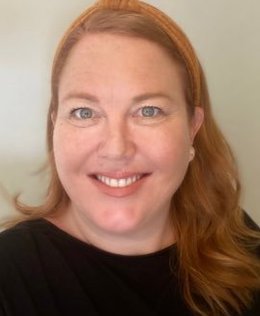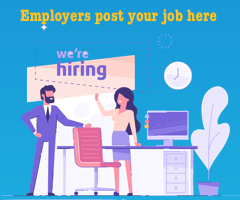Kim Borrowdale is a communications specialist who lends her expertise to socially conscious organisations, many of these in the mental health and suicide prevention sector. As Director of Community Broadcasting Foundation Kim is particularly passionate about supporting the community media to thrive.
She shares some of what she has learned in this article for radioinfo.
Before suicide touched my family’s life, I didn’t know anyone who had tried to end their life and had no idea that so many people live with regular thoughts of suicide. I was far from understanding the magnitude of people impacted by suicide in this country.
3,046 people took their own life in Australia in 2018 (reported by the ABS in 2019). That is more than twice the national road toll. Added to this are the hundreds of thousands of people who attempt suicide, plan to take their lives or think about suicide each year.
Given our population size, sadly, it’s likely many of you reading this article have been personally impacted by suicide, if not reported on suicide in a media capacity.
I’m so grateful that, more than ten years on from the first R U OK?Day, we are seeing suicide reported in the media. We are seeing suicide come out of the darkness and put front and centre. We are seeing more stories shared of hope and recovery. But can we honestly say that, apart from when someone dies from suicide, that we are talking about this often and early enough in our homes, schools, workplaces and communities?
In casual conversations I still hear so much misinformation and preconceived ideas about suicide and its prevention, that I’m constantly afraid will cloud people’s views when it comes to seeing the signs someone is struggling beyond the usual ups and downs.
Through my work in the suicide prevention sector, I’ve been privileged to meet, work with and interview people with a raft of personal experiences when it comes to suicide.
But what has stuck with me through all these conversations is one statement said by so many when sharing the story of their suicide attempt – the fact that they didn’t want to die, they wanted the pain to go away.
Every time I hear that as someone who is bereaved, I find it equal parts heart-wrenching and hopeful. It says to me that if we can find a way to talk about that pain, to stop that pain before it becomes unbearable for people, then we can support more people to live.
Today I share two suicide myths and bust them, in the hope that we can better understand suicide as a nation and work together to save lives.
MYTH: If I’m worried about someone, and I ask them if they are thinking about suicide, that will put the idea in their head
Evidence tells us that this is absolutely not the case. If you are worried about someone and think they are at risk of suicide, ask them. Ask them directly. Have you been having thoughts of suicide? Are you thinking about killing yourself?
You are not going to put the idea in their head.
I get it, this is really scary stuff. When I first asked someone I felt sick. I was so worried about how they might react, and scared that I might upset them. But do you know what is always worse? Not asking when someone does have that idea in their head. In instances where I have asked the question it is almost as though there is a sense of relief, as sometimes the other person is also worried that by saying their thoughts out loud you may get angry. Asking the question can actually help break down stigma.
Suicide first aid training organisation, LivingWorks, offers a range of courses (backed by decades of research and evidence) to help you ask directly about thoughts of suicide. Their 90-minute online introduction to suicide first aid, LivingWorks Start, is exactly as it says on the tin – a great place to start.
MYTH: Only health professionals can support someone to stay safe from suicide
Suicide first aid skills can be learnt by everyday Australians.
Approximately 40% of people who die by suicide have not been in recent contact with the health system, which means friends, family, colleagues, teachers, neighbours and online communities are in a unique position to spot the signs that someone is struggling and connect them with care.
Again, this is intimidating stuff, but I want you to know that it is possible to learn these skills. Since doing a two day suicide first training work shop (called ASIST) with LivingWorks a few years ago, I can honestly say that I feel more confident in asking directly about suicide and keeping someone safe until we can get extra help together if need be.
More than this, doing some of these courses has fundamentally changed the way I communicate with people and listen to what they’re saying underneath the words. Their tone, their actions, their situation. As humans we express ourselves in different ways, and this training opened my eyes to the many signs someone may need support beyond the usual ups and downs of life.. I cannot recommend it enough.
In a time where so many of us are not OK, I appreciate radioinfo asking me about what I have learned from my work with suicide prevention advocates and organisations. I encourage everyone to practice those essential conversation skills role modelled by R U OK? and seek out opportunities to upskill in suicide first aid.
Imagine if everyone knew what signs to look out for and how to support someone who may be thinking about suicide to stay safe. One by one we can learn the skills. And together, we could save lives.
10 September is World Suicide Prevention Day and R U OK?Day.
Find out how you can get involved in R U OK? today and every day of the year at https://www.ruok.org.au/join-r-u-ok-day
Find out about suicide first aid training and a new campaign launched by LivingWorks this week to upskill everyday Australians and support Victorians in lockdown at https://www.crisisheroes.com/livingworks
If this article has raised issues for you, there is someone to talk to at www.beyondblue.org.au, 1300 22 4636 and www.lifeline.org.au, 13 11 14.
About the Author
 Kim is a change communication specialist and storyteller who is passionate about using her professional and personal skills to make a positive contribution to communities.
Kim is a change communication specialist and storyteller who is passionate about using her professional and personal skills to make a positive contribution to communities.
In her more than twenty years’ experience working across the public, private and not for profit sectors, she has built a portfolio delivering change management projects and communication strategies in Australia and around the world. Some of these projects include work on international aid transparency initiatives, introducing change management networks for developing country programs and establishing collaborative communication frameworks for eHealth NSW and the Australian suicide prevention sector.
Previously Acting CEO for Suicide Prevention Australia, Kim now lends her expertise to socially conscious organisations and is a proud Director of Australia’s Community Broadcasting Foundation.
LinkedIn: www.linkedin.com/in/kimborrowdale/
Subscribe to the radioinfo flash briefing podcast on these platforms: Acast, Apple iTunes Podcasts, Podtail, Spotify, Google Podcasts, TuneIn, or wherever you get your podcasts.



